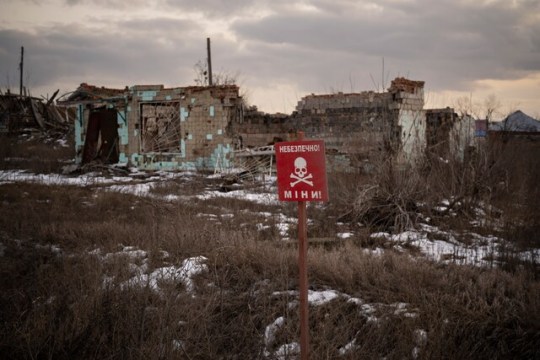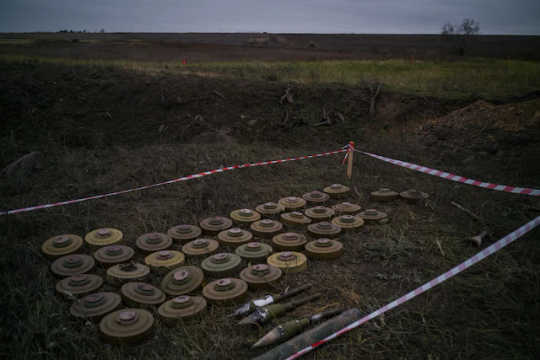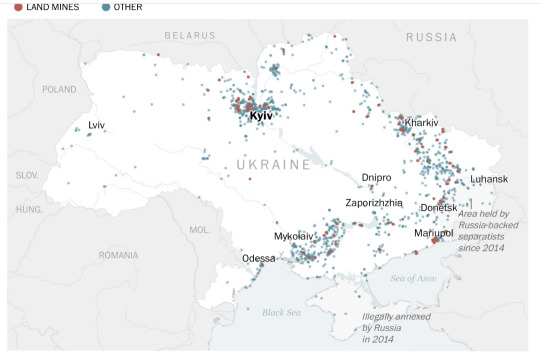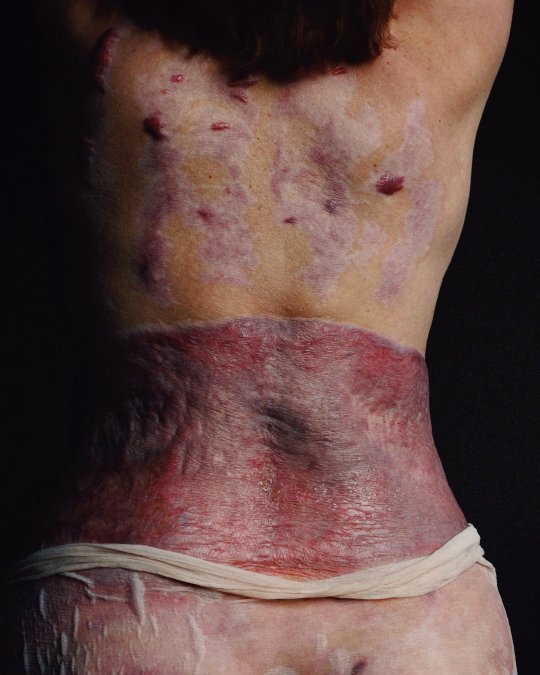#ukranian photographer
Text

Genia Rubin
Composition surréaliste
1939
#genia rubin#ukranian photographer#ukranian artist#vintage photography#women artists#women photographers#woman artist#woman photographer#surrealism#surrealist#surrealist photography#surrealist art#modern art#art history#aesthetictumblr#tumblraesthetic#tumblrpic#tumblrpictures#tumblr art#aesthetic#beauty#tumblrstyle
17 notes
·
View notes
Text

Embrase, Olha Stepanian, 2017
83 notes
·
View notes
Text

Art / Symbol
#design#designer#anti instagram#art#my artwork#my work#my art#original my work#graphic design#art by me#camera work#photographer#photography#photoshoot#symbols#artists on tumblr#ukraine#ukranian#Tumblr Influencer#content creator#content creation#photoart#random
5 notes
·
View notes
Photo

4 notes
·
View notes
Text
Ancient Music
I watch a fair number of documentaries about ‘ancient’ cultures & often wonder what sort of music did they have? For some, all we know is the instruments they played, as there was no notational system for writing music – it was an ‘oral’ tradition. I’m always amused by the music that gets played by court orchestras in movies about ancient Greece or Egypt. A modern sense of harmonics is imposed –…
View On WordPress


#am writing#ancient music#ars nova#Baroque#choral#Greece#Medieval#music#Ontario#photographs#Renaissance music#review#Toronto#Ukranian
6 notes
·
View notes
Photo








SUBLIME CINEMA #624 - MESHES OF THE AFTERNOON
Maya Deren was a Jewish-Ukranian filmmaker whose strangely beautiful avant garde films were hugely ahead of their time. She was a dancer, a choreographer, a poet, photographer, a writer and a theorist, and combined her multiple fields of talent to create ‘experience’ films which transcended any one medium. Meshes of the Afternoon is probably her best known work. Many of her shorts have been restored and are available on Blu Ray via Kino, but sadly no real Criterion treatment has been afforded to her sprawling filmography just yet.
#cinema#film#avant garde#films#movie#movies#experimental film#maya deren#ukranian filmmaker#ukraine#jewish filmmaker#surreal#surrealist#surreal film#art experiment#artist#art#art film#experimental filmmaking#black and white#b&w#cinephile#meshes of the afternoon#great film#classic film#choreography#16mm#female directors#female directed films#female directed movies
387 notes
·
View notes
Note
I don’t know If anyone saw recent video of Camilla where she showed royal photographs at CH as She welcomed Ukranian first lady. Apparently photos with William all blocked, no Kate but you can see Harry clearly. Somehow turkish Instagram is running that story. I don’t know where they got it.
I keep telling ya'll the truth is hiding in plain sight. Harry will be welcomed back with open arms. Even Camilla would welcome Harry, as long she gets titles for her children in exchange for her magnanimity.
17 notes
·
View notes
Text
You know the german schoolsystem did you a solid one when you watch the 2022 remake of "all quiet on the western front" and your first response is to go get a bucket to puke in because of how disgusted you are at just the speech of that one guy at the beginning, telling all these poor boys that they'd be glorious heroes in war, knowing fully well that only one of them at most will make it back alive. Can't believe that there are people who saw this movie and still think that there is any kind of glory in war, in killing for the sake of someone that doesn't even know you exist until the moment he has to sign the papers so your family can be notified of your death and claim the survivors benefits and not even that is guaranteed seeing how many people are still considered "missing" from all the wars with no confirmation of death.
Edit bc I have some more thoughts and wanna add stuff in general:
btw I've all seen the two previous versions of the movie in history class and read the book in my own free time and if you have an interest in german history and can sit through several different iterations of the same story then I'd really advise you to watch all of them. I don't remember much of the black and white version bc my adhd brain decided to eat a hole into my memory but the first colour variant has a very different ending to the 2022 version that can be some great food for thought. My countries history is most certainly not the best and most bedazzeled but it's im portant to learn about it, especially the really ugly parts, and not repeat the same mistakes and pretend like it never happend (looking right at the peeps over in north america who want to be all hush hush about slavery, strategic massmurder of the natives and warcrimes in the east and take black history out of school, I see you, stop it).
Also idk if there is an english translation out, but if you are also interested in learning about WW2 from the perspective of an actual KZ inmate I'd recommend you take a look into "Der Fotograf von Auschwitz" it's a book written about the very real experiences of Whilhem Brasse who was sent to the camp at the age of 22 and then forced to be the photographer at the camp, taking pictures of the inamtes for dokumentation or just for the shits and giggles of the guards and officers. The book featured photos that Brasse took in his time in the camp as well as detailed explanations for terms and practices, it was first published in 2007, but then republlished in 2014, two years after Wilhelm Brasse passed away in 2012, to honor him and the bravery he has shwon all throughout his life and the service he has done to all of us by sharing his experiences.
I really like both of these books, even though they cover two completely different eras in the history of germany and one of them is fiction while the other is a retelling of a persons life. Fiction or not, both of these sources portray the horrors of the individual periods very real, bare without excuses and close to comprehensible, though I don't think I'll ever be able to fully comprehend or understand what the people back then had gone through simply because I didn't live through it myself and I pray that I'll never have to. There are many people out there who are suffering in similiar situations right this moment, be it in the chinese torturecamps for the Uyghur people to force them into conformity or the all the brave ukranians and volunteers from other countries who fight for their home, history and families in a war against a tyran that claims to be the victim while sitting on a stash of atomic warheads. It's for those people that we have to be taught about these crimes of the past, so we can recognize them in the future and take them on informed, prepared and head first.
#random#wiika#all quiet on the western front#im westen nichts neues#sorry for getting all political#just makes me feel some big emotions and have some big opinions#this movie made me throw up a bunch#idk why it just got to me more than violence and gore usually does#and honestly in the given context I think that's a good thing#der fotograf von aushwitz#it's a really good read I promise#I'm done with expanding on this post now
122 notes
·
View notes
Note
tell me about Elizaveta (if you can without spoilers)
She is unfortunately not as plot relevant as she used to be, but that does mean I can infodump about her a lot more ::]
Elizaveta, or affectionately called Lizonka, is one of Craig's childhood friends.
Her dad owns a large portion of the mining industry, to which she is the direct heir.
She is a mixed fae, part southern fae, and part arctic fae. Fae, especially those up north, are known to have more hair, which is why even though she is fairer in complexion, she's still very fuzzy! The fae in my universe have inspiration pulled from a lot of animals, most notably rabbits, polar bears, otters, and moths. A lot of people think she has whiskers, but really it's supposed to be more like very thick peach fuzz (and if you look at her ponytail you'll notice she also just has very thick hair in general). Truth be told, this is because I wanted to draw a fat and hairy girl who was still very cute. I think I succeeded because she is literally my favorite.
As for real-world draws for her nationality (because none of my fantasy races are a 1:1 comparison), her family is coded to be Hungarian and Ukranian. (Please note that since Russkav is modeled after imperial Russia, modern-day Ukraine would have been a part of this territory and the border distinctions are spotty)
She's a photographer for the Bhevein Historical Society and supervises the photo database. This includes taking photos of renovation sites before, after, and during construction to create a thorough and accurate record. She is already financially stable, and this job is moreso just a hobby (this is the case for many who work with the Bhevein Historical Society).
She also does private photography for Craig. Iykyk.
I like to think she's pan and polyam, but she never had any sort of "questioning period" like other characters. She's always been chill and down to clown.
I do have plans for her to show up in the Gentle Hands AU, but for now the details on that are uncertain as well as potentially spoilery.
She is very good friends with Jadyn, as well as Craig's family and remains in contact with them all.
Anyway, those are some of my fav bullets that come to mind, thank you for asking about my crazy little girl ::)
#spaceships and vodka#leonardo eats carrots#history hyperfixation#webcomic#comic#webtoons#tapas#elizaveta pavlovna#asks#asks box#asks open
3 notes
·
View notes
Text

A sign warns of mines in the village of Kamyanka, on the outskirts of Izium, Ukraine, on Feb. 19. (Vadim Ghirda/AP)
There is now a huge amount of ordnance contamination in Ukraine and I think this problem is going to continue for a very long time and will have many chaotic negative consequences. Ordnance contamination refers to the presence of unexploded ordnance including mines, shells, rockets, and bombs in current and former war zones. Once hostilities have ceased, these objects, also known as ERW (Explosive Remnants of War) retain their explosive qualities and continue to injure and kill people, and can also leach toxic substances such as lead, mercury, and depleted uranium into the environment.
Anti-personnel mines are particularly deadly. There are some newer types of mine (both anti-personnel and anti-vehicle) that are designed to eventually self-detonate, which would ideally reduce risk to civilians post-war, but these self-detonation systems have significant failure rates, and in cases where the self-detonation system fails, the mine remains active indefinitely. No matter what model of mine is deployed, it always results in ordnance contamination and poses grave danger to civilians.
In 2020, there were 7,073 injuries and deaths due to mines and ERW worldwide. 80% of those casualties were civilians.
But 2020 has passed, and as the Russo-Ukranian war drags on, more and more mines and ERW are being scattered across conflict zones by both Russian and Ukrainian forces.
Articles under the cut.
Here is an article about the recently alleged illegal use of anti-personnel mines by Ukrainian forces:
Evidence mounts for use of banned mines by Ukrainian forces, rights group says
By Eve Sampson and��Samuel Granados
June 30, 2023 at 12:00 a.m. EDT
Ukrainian forces appear to have used rockets to scatter stacks of internationally banned, hand-size antipersonnel land mines over Russian-occupied areas in eastern Ukraine, according to evidence collected by Human Rights Watch.
A report released overnight adds to previous evidence collected by the New York-based rights group suggesting that Ukrainian forces scattered thousands of antipersonnel mines last year, injuring civilians, in violation of the 1997 Mine Ban Treaty, to which Ukraine is a signatory. Russia, which has not signed the treaty, has used antipersonnel mines far more extensively, rights groups say.
The bodyweight-triggered mines in question are considered particularly pernicious and violate international laws of war because they harm soldiers and civilians indiscriminately. Their small size and innocuous appearance can lead to children or other civilians handling them unknowingly.
The rights group examined photographs of the remains of rockets found in eastern Ukraine that are used exclusively to scatter PFM-1S antipersonnel mines. Handwritten messages on the remains could be traced back to Ukrainian organizations that offered to have “death wishes” inscribed on various munitions to raise funds for the war effort.
Russian forces have made use of at least 13 different types of banned antipersonnel mines, as well as victim-activated booby traps, in the invasion of Ukraine, Human Rights Watch found in previous reports. But Ukraine has expressly committed not to use them, despite evidence suggesting the contrary.
“These antipersonnel mines have had immediate and devastating consequences for civilians in and around Izium, including by tearing off limbs of residents as they go about their daily lives,” said Ida Sawyer, the director of Human Rights Watch’s crisis and conflict division.
Known as butterfly or petal mines for their shape, small size and light weight, PFM mines are typically green or brown, and one wing is filled with explosives meant to detonate when enough pressure, between 11-55lbs, is applied.
Though some types of PFMs can be emplaced by hand, PFM-1S variant must be deployed using a mine-laying system from a mortar, aircraft or rocket such as the Uragan 9M27K3 mine-laying rocket identified in the report.
Such rockets can carry 312 mines in stacks of “cassettes” that disperse after the rocket is fired.
PFM-1S mines, which can float down to the ground without detonating, are equipped with a mechanism that is designed to self-destruct between 1-40 hours after deployment.
When that mechanism fails, which it often does, the mines threaten civilians by remaining undetonated on the ground indefinitely.
The 1997 Mine Ban Treaty, to which the United States, like Russia, is not a party, requires countries to abstain from using antipersonnel mines and get rid of any stores they may have, a process that can be costly.
Russia’s rejection of the treaty does not exempt it from accountability, Sawyer said, as any use of “inherently indiscriminate weapons” violates international law.
Though Ukraine ratified the treaty in 2005 and officials reported the destruction of millions of antipersonnel mines, in 2021 the country reportedly still possessed more than 3 million.
Any use of mines contributes to an arduous process for returning Ukraine’s land to civilian use. Demining is a slow, costly enterprise that experts say could take as many as hundreds of years.
Since Ukraine regained control of the territory around Izyum, Sawyer said, a new round of mine injuries have been reported. “Because of the nature of these mines,” Sawyer said, “civilians will likely suffer for many years to come.”
Here is an article about Ukraine’s current prognosis with regards to mines and ERW:
Ukraine is now the most mined country. It will take decades to make safe.
By Eve Sampson and Samuel Granados
July 22, 2023 at 3:00 a.m. EDT

Mines and unexploded rockets next to a destroyed bridge on the way to Kherson, Ukraine, in November. (Wojciech Grzedzinski for The Washington Post )
In a year and a half of conflict, land mines — along with unexploded bombs, artillery shells and other deadly byproducts of war — have contaminated a swath of Ukraine roughly the size of Florida or Uruguay. It has become the world’s most mined country.
The transformation of Ukraine’s heartland into patches of wasteland riddled with danger is a long-term calamity on a scale that ordnance experts say has rarely been seen, and that could take hundreds of years and billions of dollars to undo.
Efforts to clear the hazards, known as unexploded ordnance, along with those to measure the full extent of the problem, can only proceed so far given that the conflict is still underway. But data collected by Ukraine’s government and independent humanitarian mine clearance groups tells a stark story.
Ordnance contamination
HALO Trust used open-source information to track more than 2,300 incidents involving ordnance and mines in Ukraine from the start of Russia’s invasion on Feb. 24, 2022, up to July 11, 2023.
“The sheer quantity of ordnance in Ukraine is just unprecedented in the last 30 years. There’s nothing like it,” said Greg Crowther, the director of programs for the Mines Advisory Group, a British charity that works to clear mines and unexploded ordnance internationally.

Staggering scale
About 30 percent of Ukraine, more than 67,000 square miles, has been exposed to severe conflict and will require time-consuming, expensive and dangerous clearance operations, according to a recent report by GLOBSEC, a think tank based in Slovakia.
Though the ongoing combat renders precise surveys impossible, the scale and concentration of ordnance makes Ukraine’s contamination greater than that of other heavily mined countries such as Afghanistan and Syria.
HALO Trust, an international nonprofit that clears land mines, has tracked, using open-source information, more than 2,300 incidents in Ukraine in which ordnance requiring clearance was discovered. Though events are greatly underreported and the data does not include the results of on-the-ground surveys by HALO Trust or other organizations, it gives a harrowing outline of the problem.
This week’s deployment by Ukrainian forces of U.S.-made cluster munitions, which are known to scatter duds that fail to explode, can only add to the danger.
Human cost
The explosives have already taken a heavy toll. Between the start of Russia’s full-scale invasion in February 2022 and July 2023, the United Nations has recorded 298 civilian deaths from explosive remnants of war, 22 of them children, and 632 civilian injuries.

Hidden killers
Both sides use mines. Russia heavily mined its front lines in anticipation of Ukraine’s ongoing counteroffensive, and has made far more extensive use of widely banned antipersonnel mines.
Small, deadly antipersonnel mines, triggered by the weight of the human body, cannot discriminate between combatants and noncombatants.
Russian forces have used at least 13 types of antipersonnel mines, as well as victim-activated booby traps, Human Rights Watch investigations found. Evidence suggests Ukraine has also used at least one type of antipersonnel mine, a rocket-delivered PFM blast mine, around the Ukrainian city of Izyum in summer 2022.
Antitank mines, which usually require immense weight to detonate, are not internationally banned, though any explosive device that could be detonated unintentionally by a civilian can be considered an antipersonnel mine under the 1997 Mine Ban Treaty, to which Ukraine, but not Russia or the United States, is a party.
Both Russian and Ukrainian forces have used anti-vehicle mines.
The United States included two types of mines in its aid packages to Ukraine: the Remote Anti-Armor Mine System, which uses 155-milimeter artillery rounds to create temporary minefields programmed to self-destruct, and M21 antitank mines, which require hundreds of pounds of force to detonate but do not self-destruct, leading to concerns about later removal.
Mines are not the only type of explosive that pose a threat. Mortars, bombs, artillery shells, cluster munitions and others also become hazards if they do not explode when deployed.
Undoing the damage
Russia’s heavily mined defenses, built up over months of stalemate along the front lines, are slowing down the Ukrainian counteroffensive that began last month, damaging Western-supplied battle tanks and infantry fighting vehicles.
Though specialized mine-clearing vehicles are in use, front-line mines are so concentrated that specialized soldiers, called sappers, have had to resort to clearing paths by hand.
Humanitarian clearance operations, which return denied land to local populations after conflict, are extremely slow, tedious and expensive. They are underway across parts of Ukraine, including around Kyiv, the capital, and other areas West of the front lines, where the battle has receded.
Ukraine’s contaminated territory is so massive that some experts estimate humanitarian clearance would take the approximately 500 demining teams in current operation 757 years to complete.
Demining is not just slow, it’s also expensive. The World Bank estimates that demining Ukraine, which costs between $2 and $8 per square meter, will cost $37.4 billion over the next 10 years.
The United States has committed more than $95 million to Ukraine’s demining, according to a 2023 State Department report.
How Ukraine compares
Mines as a dark legacy of conflict all over the world, from Cambodia to Kosovo, hint at the challenges Ukraine could face as it rebuilds.
Cambodia, riddled with millions of land mines after decades of conflict, has been subject to ongoing clearance operations for 30 years. Crowther estimates there at least five years of work remains. Tens of thousands of people have been maimed by Cambodia’s mines.
Kosovo saw armed conflict in 1998 and 1999. “Kosovo was a six-month war that was a fraction of the scale of this conflict,” Crowther said of the war in Ukraine. “It’s taken decades.”
5 notes
·
View notes
Text

Tatyana Skorokhod (Ukranian). Still Life With A Bouquet Of Daisies And Cherries 2021. Photograph.
3 notes
·
View notes
Text

Genia Rubin, Nu solarisé, c. 1942
#genia rubin#vintage photoshoot#vintage photography#ukranian photographer#ukranian artist#surrealism#surrealist#surrealist photography#surrealist art#modern art#art history#aesthetictumblr#tumblraesthetic#tumblrpic#tumblrpictures#tumblr art#nude pose#nude art#aesthetic#beauty
15 notes
·
View notes
Text



Geometry I-II-III, Olha Stepanian, 2021
35 notes
·
View notes
Text
if any of my veritably insane followers who have been following the russo-ukranian war happen to have an archive of war footage/imagery please sent me your most evocative photographs i’m trying to force my undexterous hands to create visual art for something
#preferably not footage tho#also please no gore that’s not what i mean and also i don’t want to see it anymore than i have to
3 notes
·
View notes
Photo

Various Artists, Strike Newspaper #7
By Olga Yatskevich / In Photobooks / August 12, 2022
JTF (just the facts): Published in 2022 by the Archive of Public Protests (here). Softcover, 32 pages, with 24 color photos. Includes photographs by Michał Adamski, Karolina Gembara, Miśka Kuczyńska, Adam Lach, Alicja Lesiak, Marcin Kruk, Agata Kubis, Rafał Milach, Joanna Musiał, Wojtek Radwański, Bartek Sadowski, Karolina Sobel, Dawid Zieliński. With texts by various contributors (in Ukrainian, Polish, and English). Edit by Karolina Gembara. Design by Ania Nałęcka-Milach. (Cover and spread shots below.)
The seventh and most recent issue of Strike Newspaper came out in mid April, two months into the Russian invasion of Ukraine, and focuses on various anti-war and solidarity protests. Just in the first five days after the invasion, more than 280000 people sought safety in neighboring Poland. Poland has expressed its unwavering support to Ukraine, and Poles have offered a warm welcome to the many people forced to flee.
The front cover of the Strike Newspaper shows a yellow dove (an international symbol of peace) placed against a blue background, immediately making a statement about its content. Inside the photographs are intertwined with bold typography, slogans used by the protesters, and short reflections from the Ukranians who found refuge in Poland (and the Poles who hosted them). The photographs are presented as a collective effort and are not directly credited to each photographer; similarly, there are no captions, allowing the photographs to speak for themselves.
The opening spread of the newspaper pairs a photo of a young woman holding a sign that reads “Stop Terror” with the testimony of Olia Fedorova, a Ukranian artist from Kharkiv. Another spread overlaps a photo of exhausted women and children, seen at night and outside waiting with their hastily packed suitcases and bags, while the image on the right shows people with Ukrainian flags (some just printed on piece of paper) on the street in Poland. Similar juxtapositions continue throughout the newspaper, powerfully capturing the unfolding human tragedy and the need of everyday people to take a stand and show support.
view
12 notes
·
View notes
Text
Ukranian Photographer, Marta Syrko is working on a new series of bodies scared by the war. She lives in Lviv.
I thought I'd share some of what she's posted.
Her IG: https://instagram.com/martasyrko?igshid=NDk5N2NlZjQ=
Content warning!


These are photos of Viktoria who survived the missile attack in Vinnytsia.
Her participation was about her self and others and learning to love your body again and see it as beautiful, finding beauty in the aftermath of tragedy.

A soldier who lost his leg.

Another soldier who lost both his legs in The war.
She hasn't released the full series yet but you can find more photos on her IG.
2 notes
·
View notes